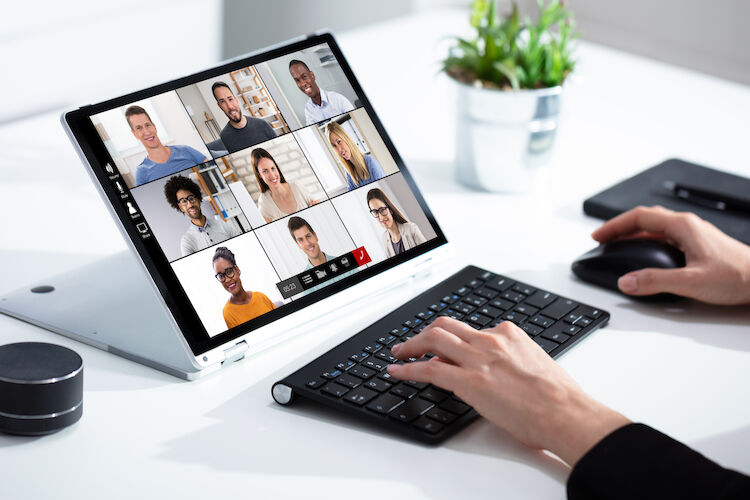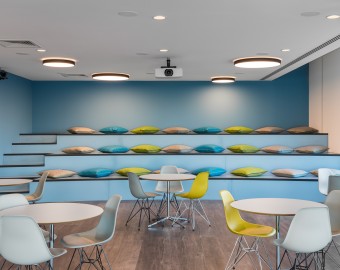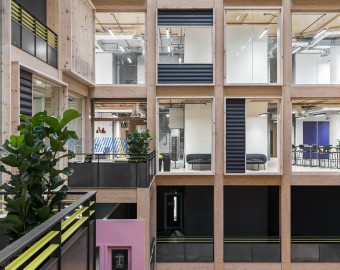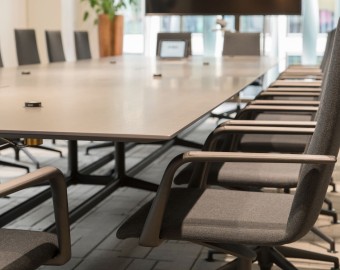Digital technology in the workplace
One significant development from the Covid-19 pandemic is in the area of video technology. Large swathes of the workforce have now migrated to hybrid or even fully remote working and we needed new and easily accessible technology to keep us productive.
Digital strategies across our business processes are essential
Many businesses had already embraced the concept of videoconferencing within meeting rooms, but the adoption of videoconferencing for every user was not so ubiquitous. Indeed, user friendly ‘Face Time’ & ‘Direct Messaging’ within effective intranets has become part of most of our lives. Whether it’s in-office or remote, digital strategies around HR, collaboration, employee engagement, content management, confidentiality and general business processes are now essential. In essence, these strategies have addressed how employees connect and collaborate with their colleagues regardless of their physical location but also how they access the files and information that they need in order to carry out their job role.

Traditionally, organisations promoted a centralised culture with employees gathered together in a single shared location, but changing to a hybrid or remote model has re-imagined that approach. Strict office hours and heavy commutes have been partnered with a flexible work-life balance, and unnecessary distractions such as inflexible meetings, office politics and inefficient processes have all but disappeared. In fact, research undertaken by Robert Half during the early stages of the pandemic indicated that nearly two thirds of respondents who were working remotely had an improved work-life balance and that almost three quarters wanted to continue to work from home indefinitely.
The challenges of a hybrid or fully remote model
In order to succeed with a hybrid or fully remote model, companies have needed to understand that their staff require different types of technology to be able to work efficiently away from the office. As well as access to IT, cloud storage and mobile technology, it’s possible for employers to implement digital tools that have built-in analytics and insights to help them assess and evaluate how individual employees are performing against their targets. Such data enables management teams to observe patterns and behaviours that can either be increasing their productivity or compromising their performance within the new structure. What’s more, digital tools can also provide data that can be used to create a set of actionable insights which are personalised to deliver optimum performance.
Anticipating responses outside of core hours
Advancement in – and the adoption of – technology is enabling employees to be less isolated, more contactable and more connected. It’s important to remember, however, that increasing performance must not be at the expense of employee satisfaction, leadership teams now need to be careful about extending the day beyond agreed core hours. Avoiding calling and messaging out of hours and anticipating an instant response will form the basis of successful people management, however tempting it might be to fire off a quick message or two with the wealth of interactive technology now available.
Office design considerations
In terms of the office setup, digital integration is vital, especially given the rise in biosecurity measures needed to protect employees when they return to the office or attend meetings.
A 'lower touch' environment is inevitable, bringing with it the benefit of an understanding of how the physical workplace is being used both for regular work and for meetings. Based on that analysis, remotely bookable hot desks and meeting rooms can dovetail with creatively designed collaborative spaces to help to keep employees safe while also promoting teamworking. Embracing digital technology is also central to the avoidance of silos and the fostering of camaraderie, both for at-home workers and for those who decide to come into the office.
Teamworking can be further enhanced with virtual collaboration software which enables those in the office to work alongside those who are remote, and AI is also set to enhance the collaborative environment by connecting employees engaged on a project, wherever they’re located.
Summary from Carol Chinn
Carol Chinn, design partner at The Workspace Consultants, believes that as hybrid and fully remote working models become the norm, flexibility in approach will be the key to success.
‘During the pandemic we all became familiar with software such as Zoom and Microsoft Teams as we met virtually with colleagues, clients and suppliers,’ comments Carol. ‘As we move into a new phase of the pandemic with restrictions eased and many teams, in part, returning to the office, it’s essential that businesses understand how their staff are best supported. At Workspace we specialise in helping clients to understand the requirements for their office space by interviewing staff and conducting surveys, and the results of these activities inform the overall design and thereby confirm the technology required to make it work.’
Get in touch
The Workspace Consultants offer office design and project management in Cambridge, London and Manchester, so if you’re looking to incorporate digital technology into your re-imagined office space, why not contact us today for an initial discussion?




